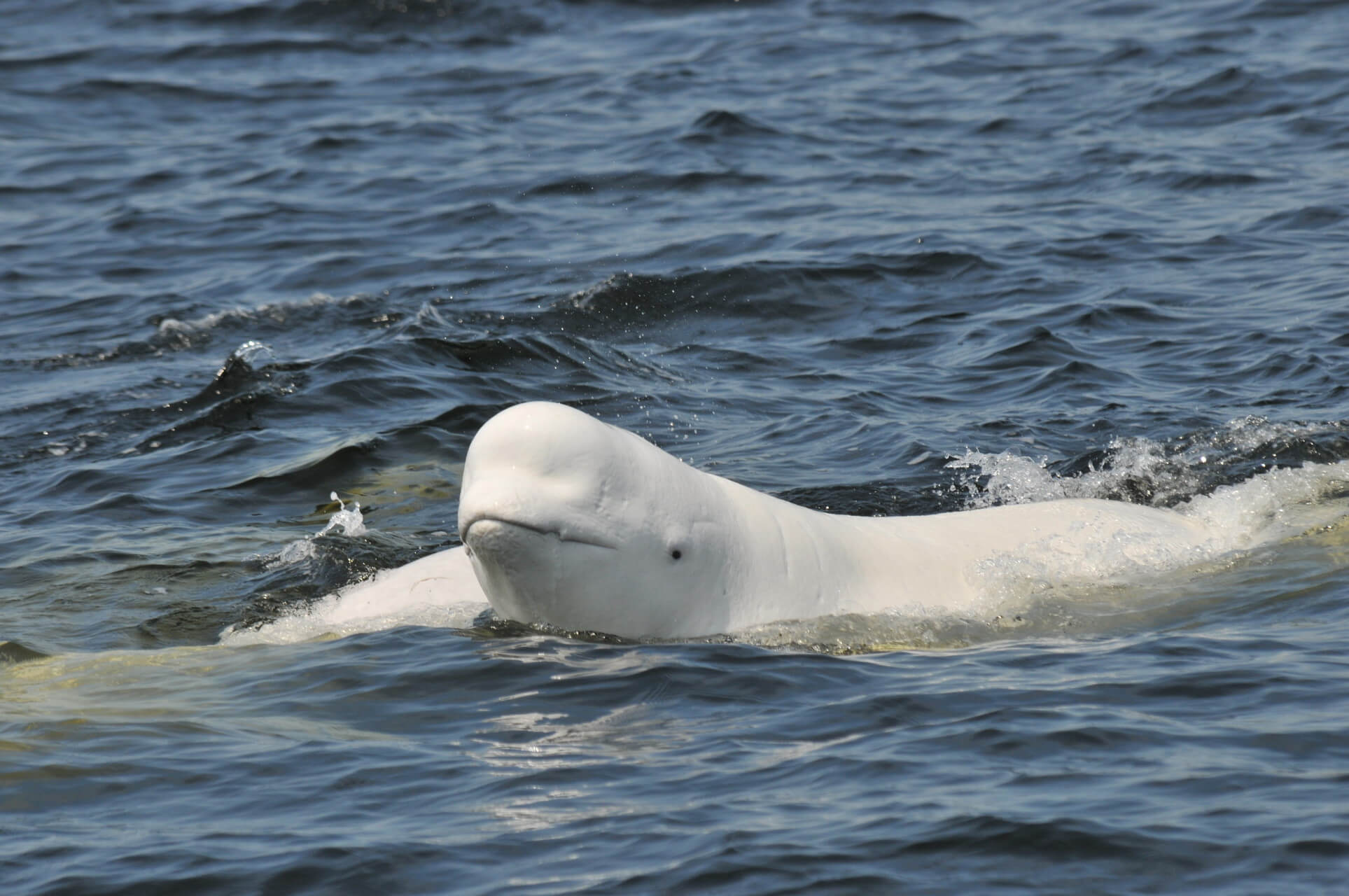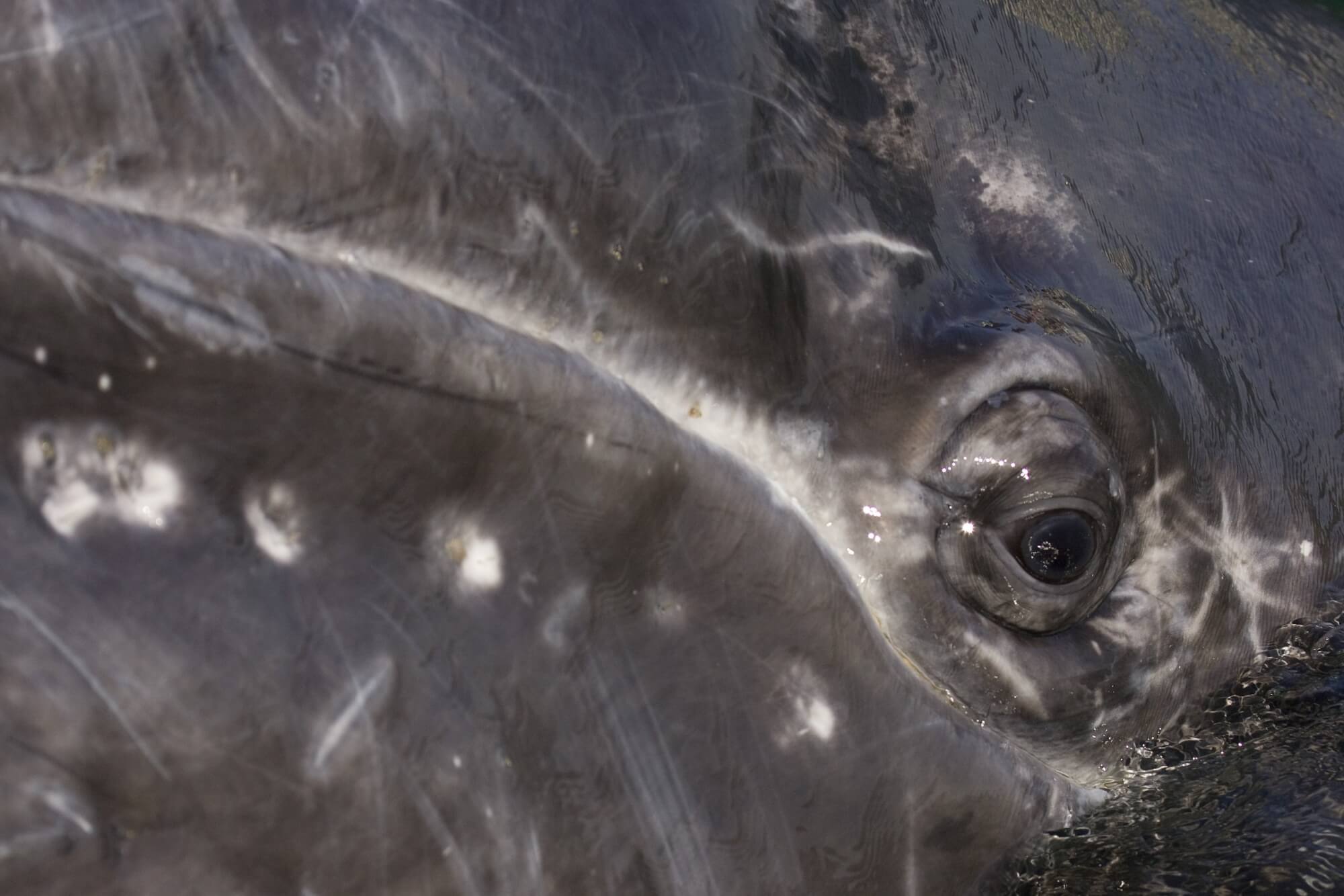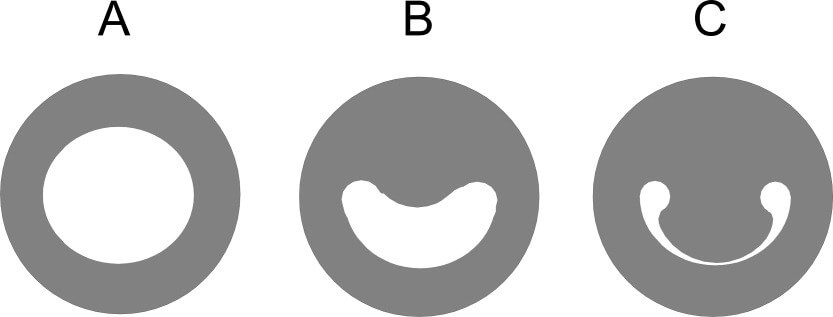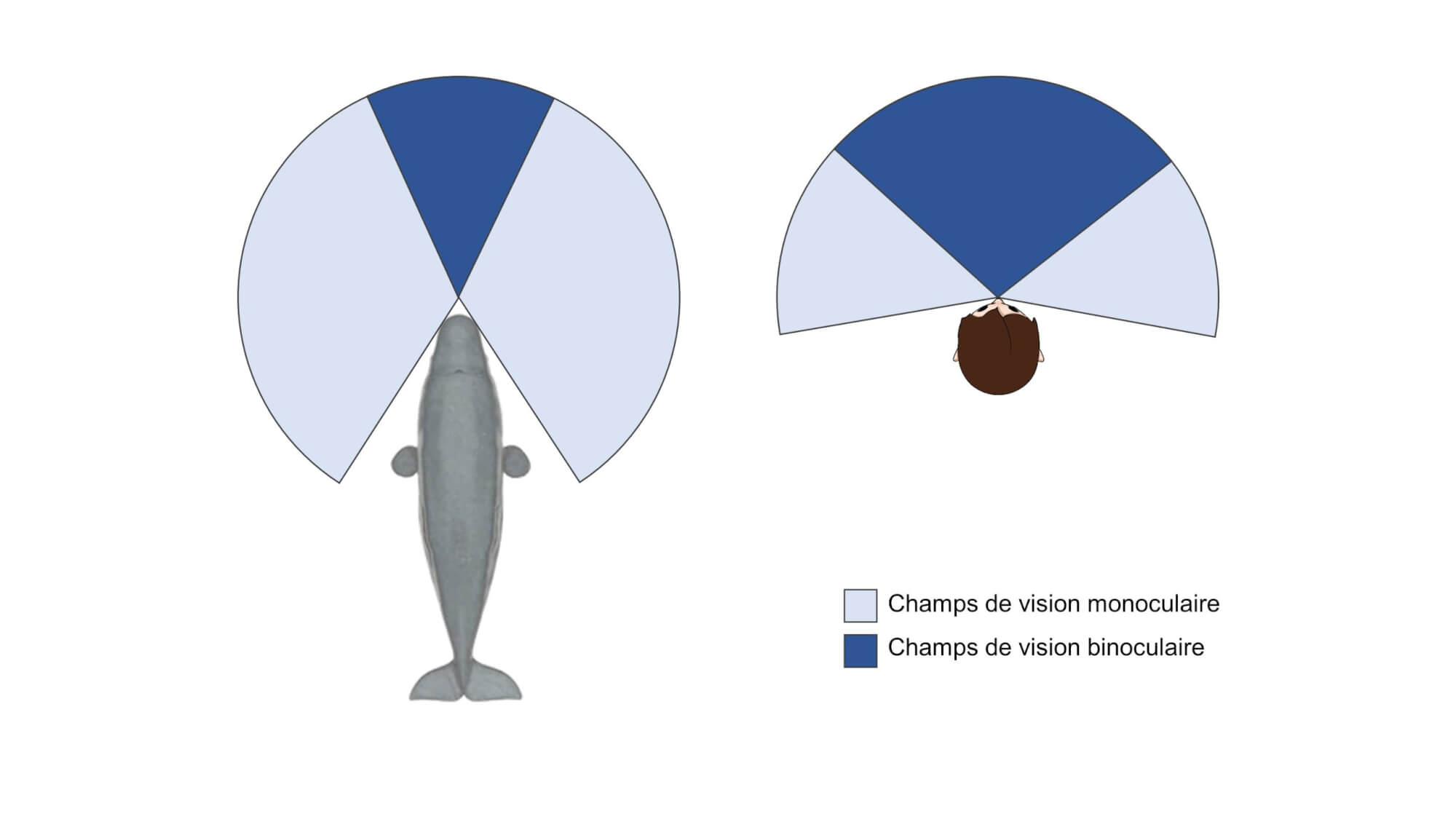Powerful yet elegant, cetaceans are majestic beings for humans to observe. But how do they see us? In colour or in black and white? Can they see us well both in the air and in the water? Do they have good three-dimensional vision? Whales Online explores these questions which we hear on occasion from visitors to the CIMM.
Whales are colour blind
When you observe whales from a Zodiac, they will not notice that you are wearing a fluorescent jumpsuit. Indeed, whales see the world in shades of grey! They can distinguish light from dark, but, like humans who are colour blind, they cannot tell the difference between red and green on a traffic light. Indeed, the eyes of cetaceans are monochromatic. They contain just one type of cone, which corresponds to a colour between red and green, depending on the species.
Surprisingly, whales cannot see the colour blue, which is the hue that best penetrates the depths of the marine universe. This inactive nature of the cones associated with the colour blue might be explained by the fact that whales’ ancestors inhabited coastal waters, where the ability to perceive blue is less of an advantage.
However, although whales’ eyes contain few cones, they do contain many rods. The function of cones is to capture colour, while rods allow an organism to see better in low light. Whales therefore seem to have prioritized night vision over colour vision!
Seeing below and above the surface
Cetaceans have three adaptations that allow them to see as clearly in water as they do in air. Firstly, whales have two areas of high cell density on their retina, i.e. areas where their vision is optimal. In comparison, humans only have one such area. Secondly, the cornea of a whale’s eye is curved so that focusing is as effective in the water as it is in the air. Whales are therefore not short-sighted when they’re in the air, so they do not see us as a fuzzy blur!
Thirdly, the distinctive attributes of a whale’s pupil allow it to adapt to the changes in light it experiences as it moves through the water column. Whales can thus see both when they are on the water surface (or in translucent waters) where the light is strong, and when they dive into the dark depths of the sea.
The pupil of several toothed whales has a very particular shape that allows it to adjust as a function of light conditions. For example, the bottlenose dolphin has a protuberance called an operculum above its iris. In low light conditions, the pupil expands to capture as many light rays as possible and acquires an oval shape. However, as the light becomes brighter, the operculum expands and the pupil constricts into a U-shape, resembling a smiley face in which the smile gets thinner and thinner. This particular pupil shape is also found in harbour porpoises, common dolphins, belugas and sperm whales.
An underwater radar
Despite their ease in spotting prey, whales have poor three-dimensional vision. The eyes of cetaceans are located on either side of their heads. They therefore benefit from a wide field of vision, which is ideal for staying in tune with what is happening around them, but they cannot accurately gauge the distance of objects in their environment.
The positioning of the eyes in cetaceans is surprising. The majority of carnivorous mammals have close, forward-facing eyes and are characterized by wide binocular vision, i.e., the fields of view of their two eyes overlap, which allows their brain to assess the depth of an object. This adaptation in predators allows them to focus on their prey and hunt them most effectively. Prey species, on the other hand, often have laterally-placed eyes in order to maximize their field of vision and adequately detect the presence of predators.
Why do whales have a vision that is more characteristic of prey when they are in fact carnivores? This might be an evolutionary holdover or be due to the fact that they live underwater in a 3-dimensional world. In any case, whales have various faculties to compensate for their poor binocular vision. For example, toothed whales use echolocation to assess distance and relief. To visualize their surroundings, they emit sounds in their environment and capture their echoes when they bounce off nearby objects. Whales therefore seem to see the world differently than we do.









